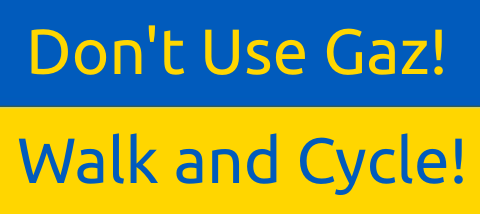This is what I found when I locked up my bike at Sainsbury's in Selly Oak on Sunday. They were not there the day before. There was no sign of a bike (other than mine). Sainsbury's have provided secure Sheffield stands and a shelter for cycles, but if you lock your bike with this sort of "lock" in Birmingham, don't be surprised if you never see your bike again.
Firstly the lock itself is hopelessly weak, but there's something even weaker, and that's the cable. A small pair of bolt croppers (the opportunist cycle thief's tool of choice) will slice through one of these cables in a fraction of a second, and a pair of wire cutters wont take much longer. I'm sure the owner thought they were doing the right thing fitting two locks, but a thief wont be bothered if it takes an extra second to steal a bike.
There's something about the design of this type of lock that particularly annoys me, and that's the way the optical properties of the transparent plastic sheath are used to make the steel core look chunkier than it is. Sliding the sheath off the cut cable makes it easy to use a micrometer to show that seven millimetres of soft plastic covers just four millimetres of steel. The transparent plastic makes it look like there's more like eight millimetres of steel. It's a con, plain and simple, and bike thieves are in on the trick.
Never use a cable lock as your primary lock in Birmingham. If a bike can can actually be used as a bike, get a D-lock. If the bike is rubbish, at least get a cheap D-lock. Even rubbish bikes get stolen (as scrap metal).  The more desirable the bike, the better the lock it needs, but don't lock it like this lovely Genesis that was in the Sainsbury's shelter next to the cut cable locks when I returned to my bike. The quick-release (QR) spindles mean the (presumably expensive) wheels can be stolen in seconds, leaving the owner with a very nice frame and a bus journey home. Some bikes even have a quick-release saddle (which I guess is handy if your saddle breaks on a ride and you have a spare with you), creating another opportunity for thieves. So always wrap the shackle of a D-lock around the back wheel, the frame, and the stand. If you have a QR front wheel you need a second lock for that. And if you have a QR skewer on your saddle you need a third lock for the saddle. Clearly it makes sense if you have QR equipment to get some of those expensive skewer locks. Alternatively, insist on nutted spindles.
The more desirable the bike, the better the lock it needs, but don't lock it like this lovely Genesis that was in the Sainsbury's shelter next to the cut cable locks when I returned to my bike. The quick-release (QR) spindles mean the (presumably expensive) wheels can be stolen in seconds, leaving the owner with a very nice frame and a bus journey home. Some bikes even have a quick-release saddle (which I guess is handy if your saddle breaks on a ride and you have a spare with you), creating another opportunity for thieves. So always wrap the shackle of a D-lock around the back wheel, the frame, and the stand. If you have a QR front wheel you need a second lock for that. And if you have a QR skewer on your saddle you need a third lock for the saddle. Clearly it makes sense if you have QR equipment to get some of those expensive skewer locks. Alternatively, insist on nutted spindles.
Finally, never use a "wheel bender" bike stand (at least not in the way intended). The video below shows the double-peril of leaving a bike with QR skewers at a wheel bender.
Correct Use of a D-Lock



